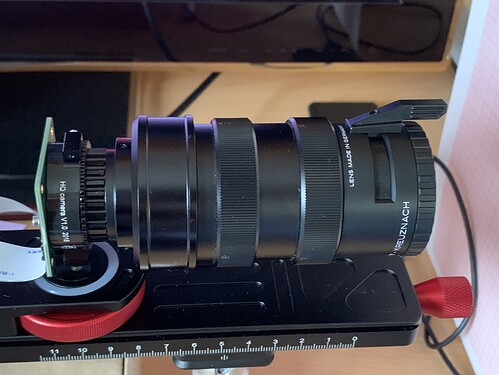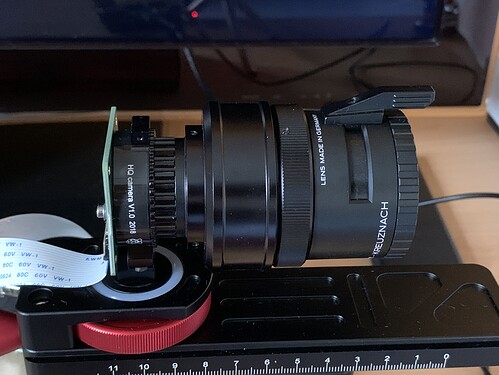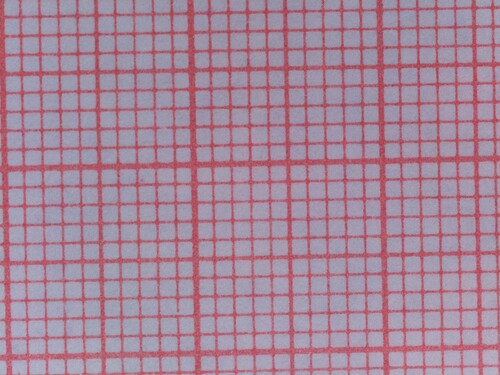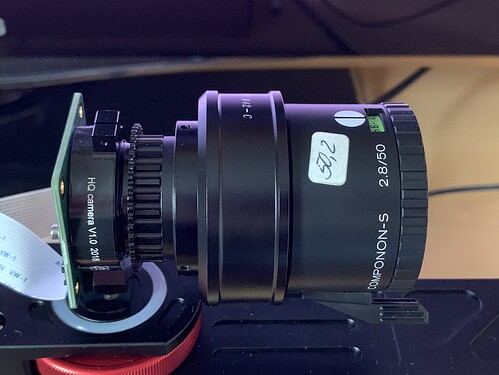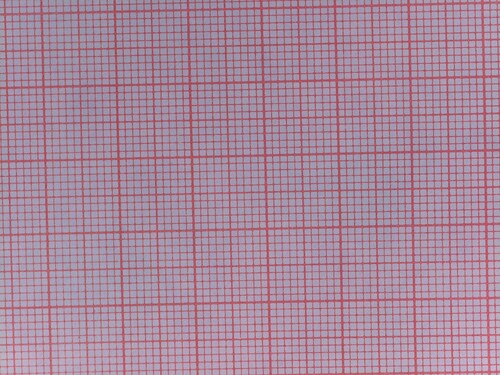After doing some more research on this, I went and ordered a couple of parts a few days ago. They arrived today and I did some experiments.
The basic idea I’m following is to adapt from the Componon’s M39 thread to an M42 thread and then to the C-/CS-Mount thread. The advantage of this approach is that M42 thread parts are fairly easy to get. This is partially due to Pentax using this thread on their cameras in the 1960s and 1970s. You might even find M42 referred to as Pentax-Mount. The fact that all three mounts are simple threaded mounts also means that, if you have access to a machine shop, you could in theory make your own components, as they are just tubes with threaded ends.
That said, here is what I got:
- M39 to M42 thread adapter ring like this one. These are super simple and don’t add any length to your assembly, which is handy. I got a no-name one for about 7€ ($7.90). If you have the patience to order from China, they can be had for as little as 1-2€ (roughly $1.70).
- M42 Albinar extension tubes (3 pieces: 10mm, 19mm, and 26mm). I’ve had them laying around from an old Pentax camera. No-name ones like these usually come in similar sets of three, and seem to cost just under 5€ ($5.65) from China and around 10€ ($11.29) otherwise.
- M42 to C-Mount adapter (this one). I believe this is actually the same one @johnarthurkelly used. This was the hardest part to find. Here in Germany it cost me roughly 40€ ($45.16), but the manufacturers themselves sell for it for just under $25 elsewhere. Other no-name ones can be had from China for as little as 20€ ($22.58), if your patience allows.
Instead of or in addition to extension tubes you can also get an M42 focussing helicoid of similar length such as this one for $75. Alternatives from China cost just under 20€ ($22.58). This allows you to focus the camera without having to move the entire assembly. I’m using the Raspberry Pi HQ Camera, which has a built in back-focus, which is why I stuck with the extension tubes I already had anyway.
I am also using a CS- to C-Mount adapter that comes with the HQ Camera. Because C- and CS-Mount are essentially the same, you can skip this one if you don’t need the additional 5mm distance between your lens and the sensor.
As for the experiments I did: I mounted the camera with the Componon lens and the aforementioned adapters on a tripod, facing a piece of 1mm graph paper. This allows for a quick and dirty assessment of how large an image area the sensor covers with a given optical setup. I wanted to try this for 8mm film, and while I was already at it, I did the same experiment for 16mm and 35mm, as well (hope this helps others).
For 8mm I used in order: C- to CS-Mount adapter, M42 to C-Mount adapter, 19mm extension tube, 26mm extension tube. See photo below. Resulting flange distance: 90.5mm
The next imagine shows the graph paper more or less in focus at about 78mm away from the lens. You can see that a Super 8 frame of the dimensions put together by @cpixip should fit comfortably with a bit of play on all sides.
Here is a similar experiment for 16mm. This time I used in order: C- to CS-Mount adapter, M42 to C-Mount adapter, 10mm extension tube. This gives a flange distance of 55.5mm. The graph paper is in focus at roughly 240mm away from the lens.
For 35mm the setup looks as follows. I used in order: C- to CS-Mount adapter, M42 to C-Mount adapter. I also unscrewed the back-focus ring to about 2mm. The flange distance is therefore roughly 47.5mm. The graph paper is around 568mm away from the lens.
Please keep in mind that this is just a dodgy, quick and dirty experiment I threw together. The numbers I’m giving are not precise, but should give a rough idea of what is what. Also, the graph paper was just held in place with some clamps. It probably wasn’t perfectly straight, so parts of my images may well be out of focus even though they could actually be sharp if I had tried a little harder.
While the setup for 8mm is pretty much ideal, I realised that for the larger film sizes, the distance between lens and graph paper is rather long. I’m not sure if this requires using a lens with a shorter focal length or if there is an “easier” trick to solve this.
